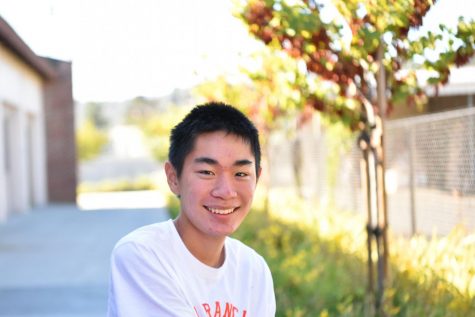Arm problems
How arm pains and injuries have impacted athletes at MVHS
May 15, 2021
The summer before her sophomore year, varsity swimmer and senior Winter Bloom maintained a daily routine. She went to the pool every weekday for swim practices, going once in the morning and once at night on Tuesdays and Thursdays. At first, the practices went smoothly and her times got faster. However, Bloom also began to notice shoulder soreness that eventually developed into significant shoulder pain. This hindered her ability to swim butterfly, a stroke that relies on upper body strength and strong arm rotations.
Due to this injury, Bloom says she began to favor using her legs over her arms while swimming, which meant that her times improved for strokes that required more kick strength such as breaststroke, freestyle and backstroke. It wasn’t until her sports clearance appointment during her junior year that Bloom told her doctor about the shoulder injury. She was then informed that her shoulder pain was occuring because of the repetitive motion and a lack of strength in her right shoulder. Bloom was then referred to a physical therapist to avoid hurting herself in the future.
Certified Athletic Trainer Javier Margarito explains that shoulder and arm injuries are extremely common in almost all overhand and throwing sports, and cites tennis, baseball and swim as sports where he observes many of these arm injuries.
Margarito also notes that younger age groups, especially, often disregard the wellbeing of their own body.
“[Younger age groups] tend to neglect their bodies a bit more,” Margarito said. “[They won’t be] as conscious [that] what they are doing on a daily basis matters in the long term, especially over the course of a season.”
Bloom notes that her physical therapist told her that she should not compete for the month of March. However, Bloom decided that she would continue to compete in swim meets regardless.
“I wasn’t the fastest swimmer on the team, but I was someone with a lot of influence,” Bloom said. “I still wanted to set the example and say, ‘Try your best and even if it doesn’t turn out [good] at least you did something.’ I think doing something is better than doing nothing. [My doctor] strongly urged me not to compete but I knew I needed to step up because it was junior year and I wanted to make an impact [on the team].”
Bloom says that other swimmers should not just focus on the impact to their team, but also the consequences for themselves. She advises other swimmers to avoid shoulder injuries by focusing on dryland exercises or out of the water exercises.
“Dryland has never been considered fun,” Bloom said. “We do swimming for a reason. Some of us aren’t hand eye coordinated, some of us can’t run, it’s just reasons why we do water sports. So I think dryland is definitely something that isn’t really easy, but it is something that is pretty essential to being a well rounded athlete.”
Art teacher Brian Chow has also experienced an arm injury. However, his injury was not swimming-related. Chow broke his wrist after attempting to perform tricks at a skateboard park, a hobby he’s had since he was in high school.
“I broke [my wrist] by just losing my balance,” Chow said. “I actually didn’t fall hard — I just kind of fell back and put my hand down to stop my fall and that was enough to break my wrist. Your wrist only goes so far, and [for it to] just go back a little bit more [will] crack the bone, which is a very common break [for skaters]. I had all protective hand pads on except I didn’t have wrist guards on. So this is what happens when your older teachers and older people try to reclaim their youth.”
Following his wrist break, Chow did not go to the emergency room; instead, he went home and immobilized his arm, scheduling a doctor’s appointment for later that week. After conducting X-rays, his doctor diagnosed him with a broken arm and made him wear a cast for six weeks.
Despite this injury, Chow mentions that the injury didn’t affect his teaching, other than no longer being able to use his computer trackpad. Chow highlights that the main obstacle in his recovery process was immobilization, though he accepted the risk of continuing to skateboard.
“This was completely under my control, and I was very aware of what could happen,” Chow said. “Actually, I was still having fun, and I still skateboard after I broke it. It was one of those [injuries] where you think, ‘I’ll be fine,’ and then later on you realize, ‘Maybe I’m not so fine.’ It was just one of those things where you just never know, but you only live once.”

















